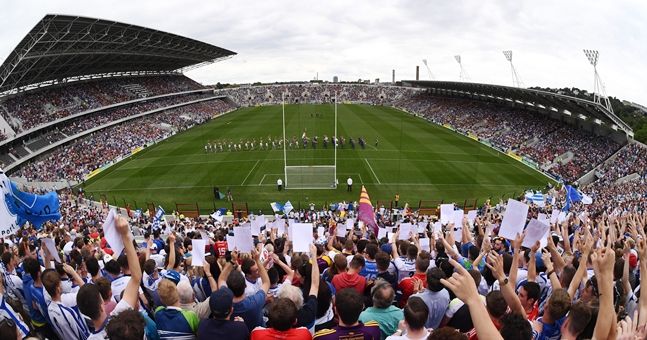World Rugby want seats, and lots of them, for the 2023 Rugby World Cup.
Halloween 2017 was supposed to be a celebration of how little old Ireland could pull together and show the world that we could stage a major global sporting event over an extended time period. Instead, we got the horror show so few expected. Horrors often do you like that.
On Tuesday morning, the Rugby World Cup 2023 Bid Evaluation Report placed Ireland third in a list of three. South Africa got the reports recommendation as preferred World Cup 2023 hosts, with France in second place. Ireland were third and with some daylight in between.
In the cold light of day, and looking over the 100+ page report, Ireland’s bid suffered massively in three areas – match venues, host cities and lack of prior experience. Guaranteed payment to World Rugby for hosting rights surely played a part too – Ireland fronting the required £120m [if they get the nod] but France and South Africa raising the stakes.
Here's how much each of the bidding nations were guaranteeing World Rugby as the fee to host #RWC2023 pic.twitter.com/gkfGdFeKTb
— Pat McCarry (@patmccarry) October 31, 2017
The prior experience one is a pain in the hole – how do you get experience without being first given the experience of getting the experience?! – we can’t say we would not use this card to our advantage if we had it to play. We don’t but France and South Africa do. It’s frustrating but what can you do?
As for stadiums, we were always going to be up against it here. When you look at the cold, hard numbers, Ireland is not in the same neighbourhood when it comes to capacity [and potential ticket sales].
- SOUTH AFRICA – 8 proposed venues with 453,125 seats
- FRANCE – 9 proposed venues with 446,623 seats [in total]
- IRELAND – 12 proposed venues with 388,527 seats
Take MacHale Park, Celtic Park, The RDS and Nowlan Park out of the equation – they are additional grounds if required – and you sheave almost 90,000 off Ireland’s potential capacity. A lot of weight is going on the shoulders of Croke Park and the Aviva Stadium, both located within four kilometres of each other.
In the section on ‘A minimum of 8 venues that meet, or with upgrade/building works’ that meet the basic ‘venue standards’, Ireland scored badly. The highest mark Ireland could get in this category was 40 but it was awarded 25. France got 35 and South Africa got full marks.

Some of Ireland’s most cherished GAA grounds raised flags with the independent consultants assessing each of the three bids. On four of the country’s big GAA grounds, the report noted:
‘Pairc Ui Chaoimh, Pearse Stadium and Fitzgerald Stadium require a significant level of overlay which is flagged as a risk, given the amount of work required to bring these venues up to RWC standard.
‘Casement Park is scheduled for redevelopment by 2020 and will also require a significant level of overlay. At time of writing, we understand that this venue is still subject to final planning approval.’
Ireland’s proposal contained a plan for seating and standing in venues – 81% of all tickets sold would be seated and the remaining 19% would be standing [95% to 5% standing for knock-out games]. That was never going to go down well with World Rugby, who insisted on New Zealand putting in temporary stands at Eden Park, for the 2011 World Cup, on the terraced ends of the ground.
The lay-person may also ask what the recently completed and much-praised Pairc Ui Chaoimh needs to do to get up to ‘RWC standard’ but each venue will need ample space to accommodate broadcasters and corporate needs [tents, hosting areas, extra concession and merchandise stands]. World Rugby wants a 500-metre radius around each stadium to use as its own for game-days.
In terms of host cities, the lowest population bases in France are Bordeaux, Lille and St-Etienne [200,000].
Ireland’s lowest is Killarney, with a given population of 14,219, while Galway and Limerick both have populations under 100,000. The report notes Killarney ‘is not sizeable, with less experience in large scale international events’. Another tick against Ireland.
Many involved in the GAA will carry on with their lives and not worry too much about the opinion of how much money can be shook from their stadiums and cities.
As for legacy, while each ground would be fortunate enough to be spruced up, many of the measures would be temporary – a rugby circus rolling into town and sticking tents up only to roll out leaving colourful memories, vague toothache and little else.
World Rugby looks to be following the money on this one. It will want to boost its coffers amid the uncertainty surrounding Japan in 2019. They see the seats and the possibilities of filling those seats as the draw. Ireland may be showing the quaint, fun-loving bird in the hand but World Rugby wants the two fluttering away in the bush.
Maybe Ireland will get the chance to host the World Cup, then, in 2027.
Maybe Casement Park will be built by then too…




























